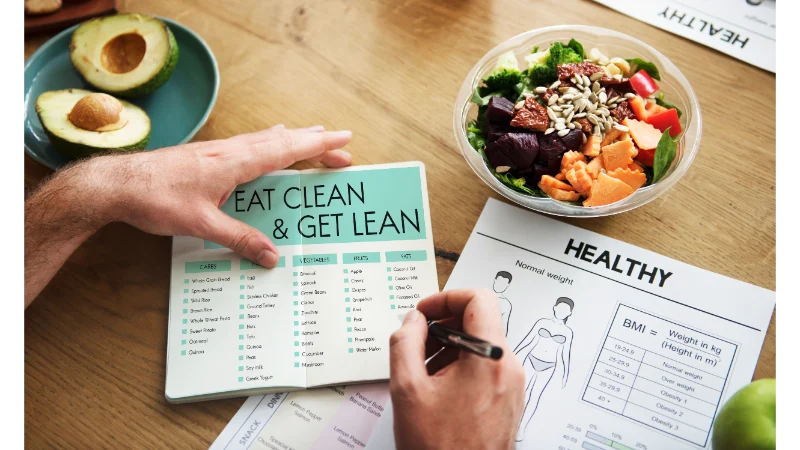Introduction to IBS and Diet
Irritable Bowel Syndrome (IBS) affects millions of people globally. It causes discomfort, bloating, and unpredictable digestion.
Diet plays a crucial role in managing IBS symptoms. A proper IBS food chart helps avoid flare-ups.
This article will explain how to eat smartly with IBS. It will guide you through food categories, tips, and planning.
Understanding IBS Symptoms and Triggers
IBS symptoms include bloating, gas, constipation, diarrhea, and abdominal cramps. These symptoms can vary from person to person.
Triggers often include specific foods, stress, and hormone changes. Knowing your personal triggers is essential.
The IBS food chart works as a tool to track what helps or harms your gut health.
What Is an IBS Food Chart?
An IBS food chart is a categorized list of foods to eat or avoid. It provides clarity for IBS-friendly meals.
It divides foods into three groups: safe, moderate, and trigger foods. This structure simplifies your meal planning.
It can be customized for individual responses. It serves as a reference for safe digestion.
Safe Foods on the IBS Food Chart
Safe foods are unlikely to trigger IBS symptoms. They are gentle on the digestive system and offer balanced nutrition.
These include white rice, lean chicken, eggs, carrots, cucumbers, and potatoes. They are low in FODMAPs.
FODMAPs are carbohydrates that ferment in the gut. Low-FODMAP diets help reduce IBS discomfort.
Drink plenty of water alongside these foods. Hydration supports smoother digestion.
Foods to Limit for IBS Relief
Some foods may be tolerated in small amounts but can trigger symptoms when eaten in excess. Limit these foods carefully.
Examples include oats, apples, honey, avocado, and beans. They are moderate in FODMAPs.
Track your response to these foods using an IBS food chart. Adjust portions based on tolerance levels.
Introduce one new food at a time. This practice helps identify which foods affect you.
High-Risk Foods to Avoid Completely
Trigger foods worsen IBS symptoms and should be avoided as much as possible. These foods stress your digestive system.
Avoid onions, garlic, broccoli, cauliflower, cabbage, and dairy. These cause bloating, gas, and cramping.
Sugar alcohols like sorbitol and xylitol also worsen symptoms. Avoid sugar-free gum and candies.
Spicy, fried, and fatty foods can disrupt your gut. Skip these for a calmer stomach.
How to Read an IBS Food Chart Effectively
Look at the food categories and start from the safe list. Introduce those foods into your meals first.
Track your symptoms after each meal. Use notes and times to see how your body reacts.
Highlight any foods that cause discomfort. This helps refine your own IBS food chart.
A well-used chart becomes your personal roadmap to symptom-free living.
Meal Planning with the IBS Food Chart
Plan each meal around safe foods. Include lean protein, low-FODMAP vegetables, and suitable carbs.
For example, make grilled chicken with carrots and rice. This combination supports easy digestion.
Breakfast can include scrambled eggs and gluten-free toast. Avoid fruit juices high in sugar.
Use the IBS food chart while grocery shopping. Make informed decisions before adding items to your cart.
Snacking Smart with IBS
Snacking doesn’t have to be stressful. Stick with simple, low-FODMAP items.
Examples include rice cakes, peanut butter, bananas, and lactose-free yogurt. These snacks prevent sudden hunger.
Keep small portions. Eating too much at once may overwhelm your gut.
Hydrate between snacks and meals. This supports smooth digestion.
Dining Out Using the IBS Food Chart
Eating out with IBS can be challenging. Review the menu before choosing a restaurant.
Pick grilled, plain options. Skip sauces, dressings, and fried foods.
Ask for food substitutions when necessary. Most restaurants will accommodate dietary needs.
Keep your IBS food chart in mind while ordering. Stick to familiar, well-tolerated choices.
Personalizing Your IBS Food Chart
Every person reacts differently. Your chart must reflect your unique digestion pattern.
Maintain a food and symptom diary. Update it weekly with findings.
Include both meals and beverages. Even drinks like soda or coffee may trigger IBS.
Review your chart monthly. Adjust based on what works best.
Common Mistakes to Avoid When Using the IBS Food Chart
Don’t rely only on general charts. Customize yours through trial and error.
Avoid skipping meals. Irregular eating disrupts digestion and worsens symptoms.
Don’t reintroduce multiple foods at once. Take one step at a time.
Lastly, don’t ignore hydration. It’s essential for regular bowel function.
Hydration and IBS Management
Water aids digestion and prevents constipation. Aim for at least 8 glasses daily.
Avoid carbonated beverages and caffeine. These can irritate the digestive tract.
Herbal teas like peppermint or ginger are soothing for IBS. Include them in your daily routine.
Your IBS food chart should include drinks as well. Some affect digestion more than food.
When to See a Doctor
If symptoms persist despite using the food chart, consult a doctor. You may need further tests or advice.
IBS shares symptoms with other conditions. Ruling out serious causes is important.
Medical professionals can also guide your diet plan. Dietitians often help tailor the IBS food chart.
Don’t self-diagnose severe symptoms. Always seek professional support when unsure.
Benefits of Following an IBS Food Chart
Reduces IBS symptoms over time. Helps improve quality of life and confidence.
Supports consistent eating habits. Reduces digestive surprises and anxiety around meals.
Gives control back to the individual. Creates structure and clear boundaries.
Makes food choices simpler. Reduces confusion and trial-and-error stress.
Creating Long-Term Habits
Consistency is key. Keep using the chart daily.
Update it as your body changes. Long-term tracking reveals valuable insights.
Celebrate small wins. Fewer symptoms mean the chart is working.
Make your diet part of your lifestyle. A steady gut improves physical and mental health.
FAQs: IBS Food Chart
1. What is the purpose of an IBS food chart?
It helps manage IBS by listing safe, moderate, and trigger foods based on digestion response.
2. How often should I update my IBS food chart?
Update it every month or when new symptoms or food reactions occur.
3. Are fruits allowed on an IBS food chart?
Yes, but choose low-FODMAP fruits like bananas, strawberries, and grapes.
4. Can dairy be included in the IBS food chart?
Only lactose-free or plant-based dairy is recommended to avoid bloating and gas.
5. Can I eat out with IBS?
Yes, but stick to grilled or plain items and avoid sauces, fried, or spicy foods.
6. Is an IBS food chart enough to control all symptoms?
Not always. You may need lifestyle changes and medical guidance as well.
Conclusion
An IBS food chart offers structure, relief, and control. It helps make safe food choices with confidence.
By following the chart, you reduce triggers and improve digestion. It becomes easier to plan, eat, and enjoy meals.
Personalize the chart to suit your body’s needs. Keep tracking, adjusting, and living comfortably.
Start today with small changes. Better gut health is possible—one meal at a time. My site.


